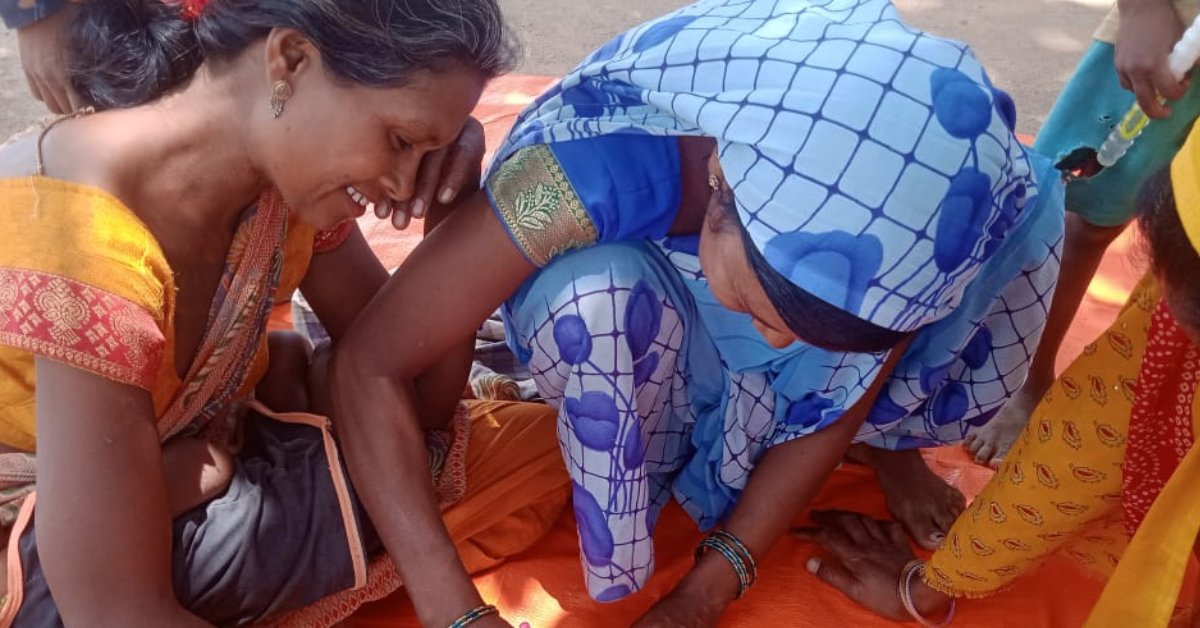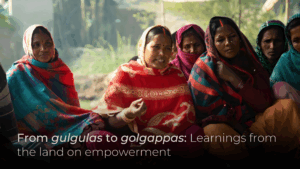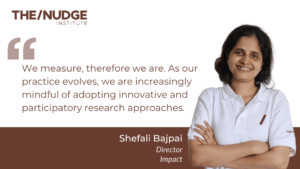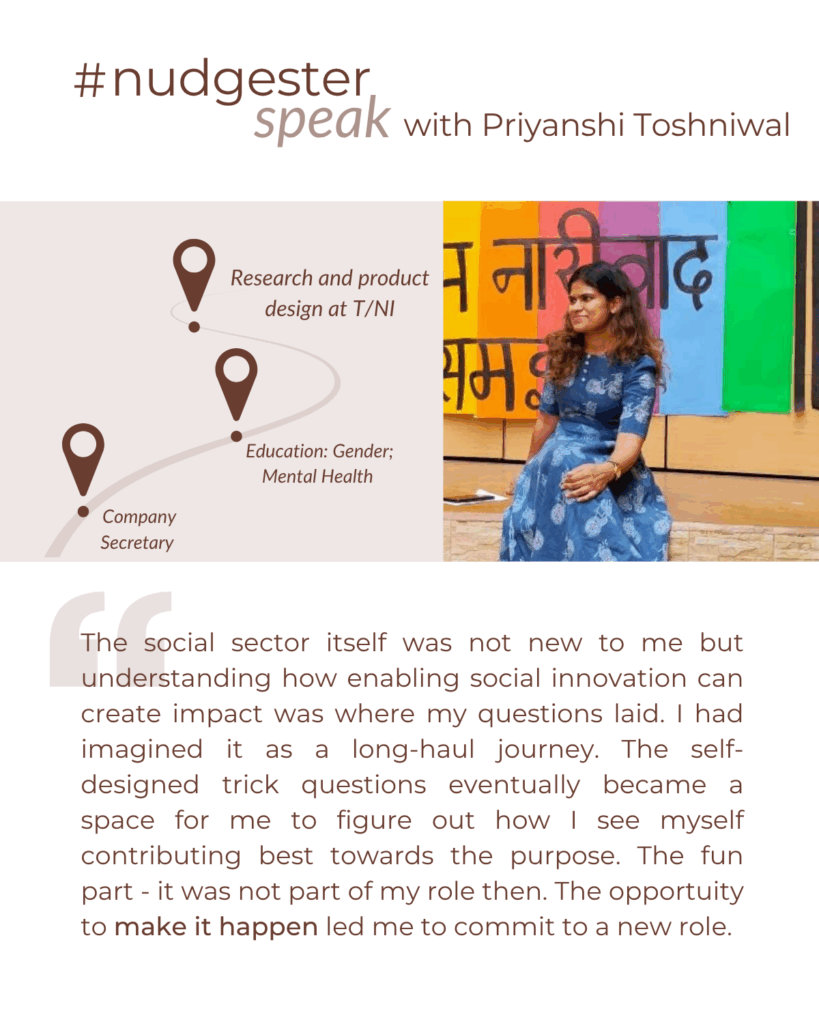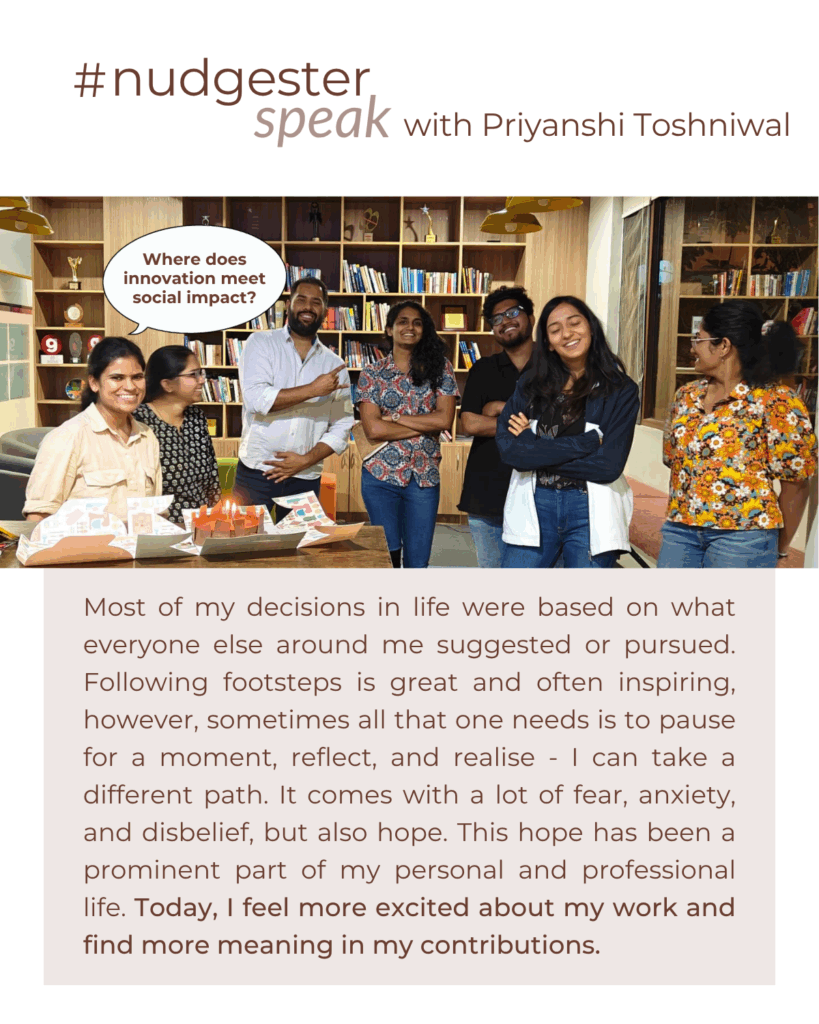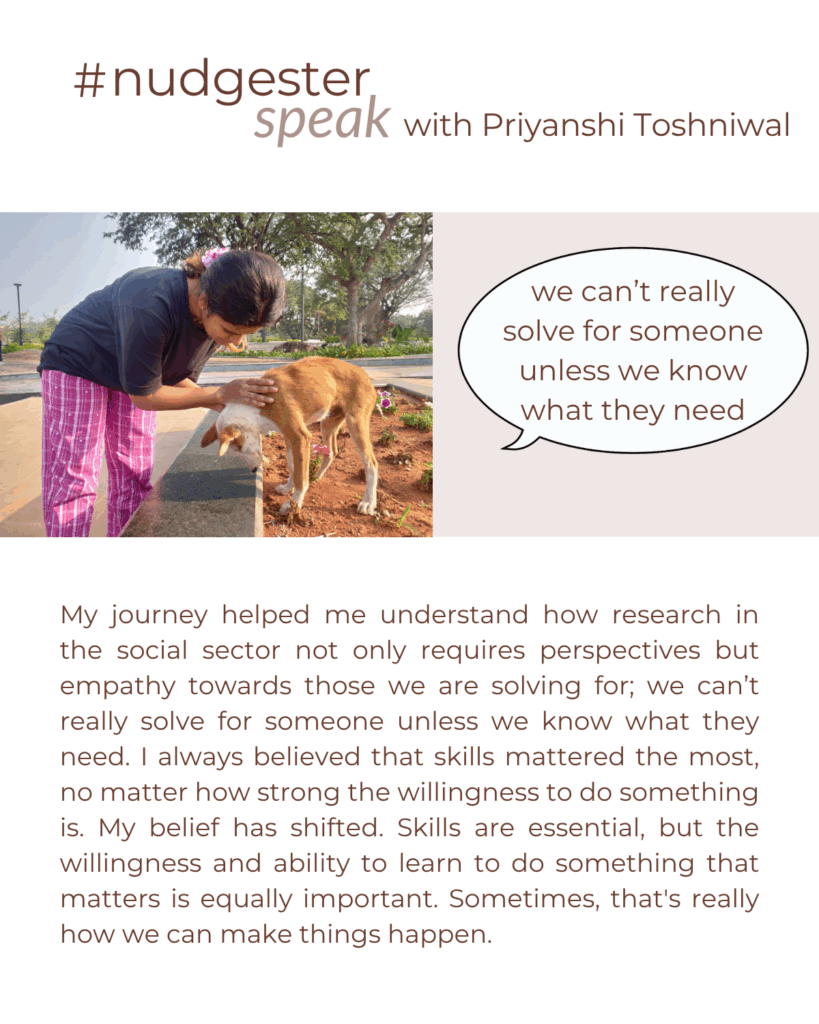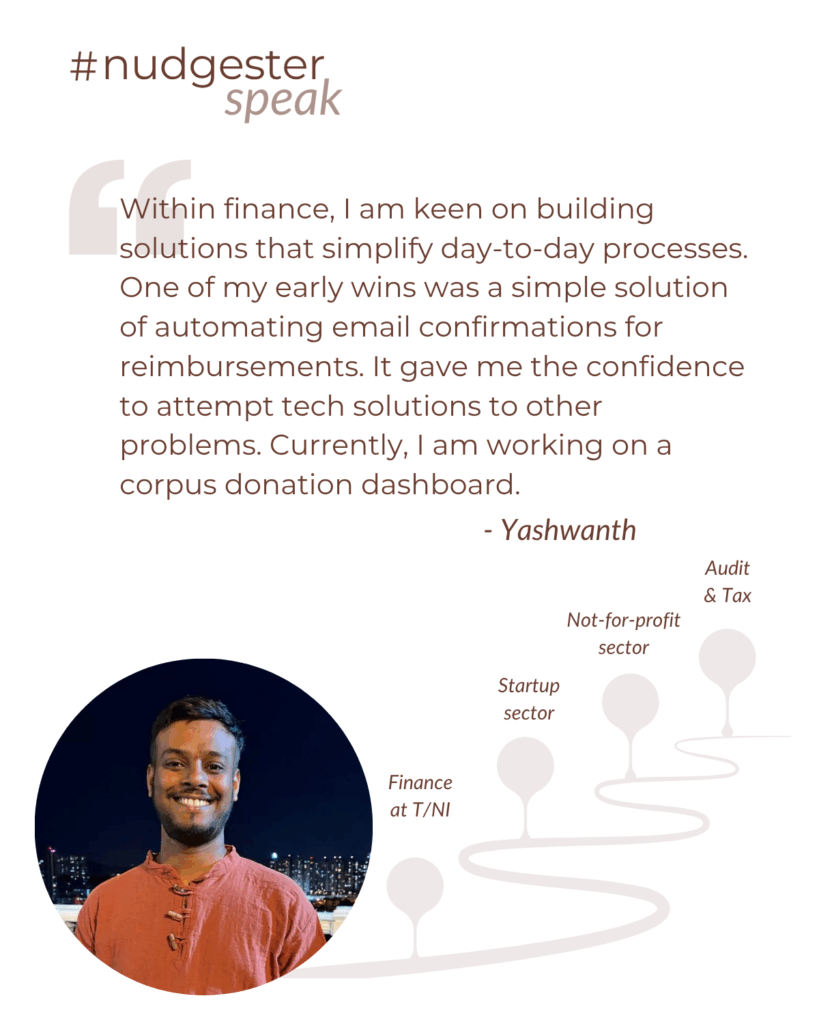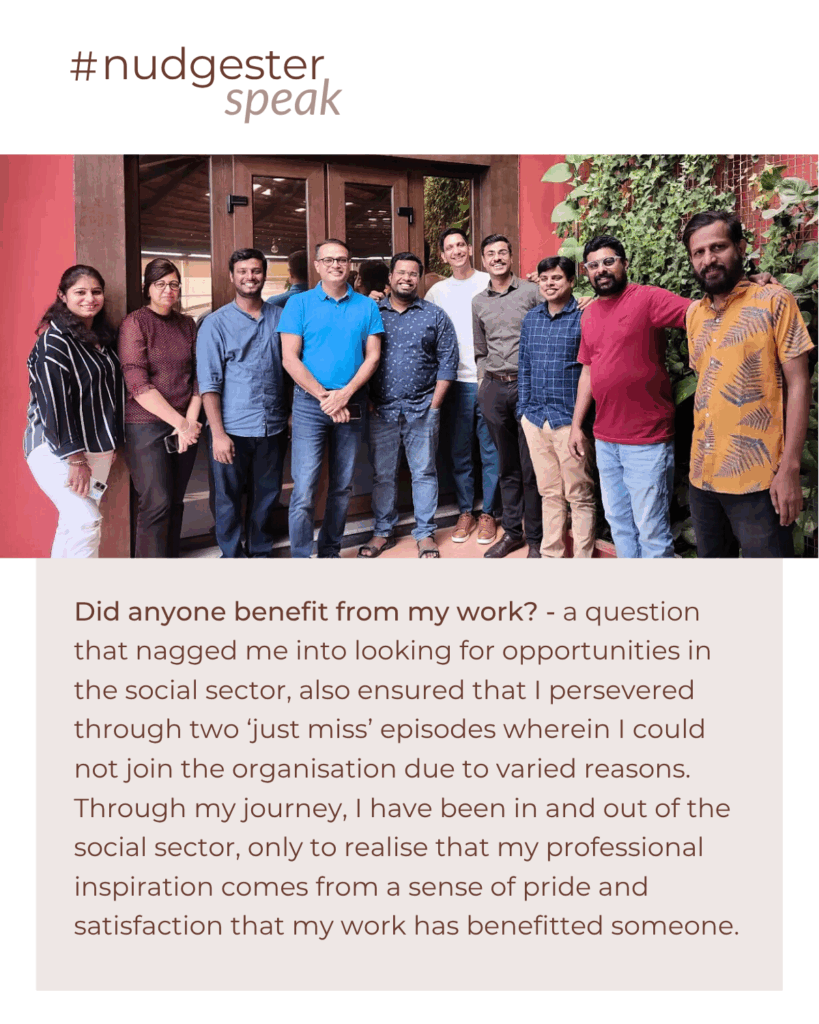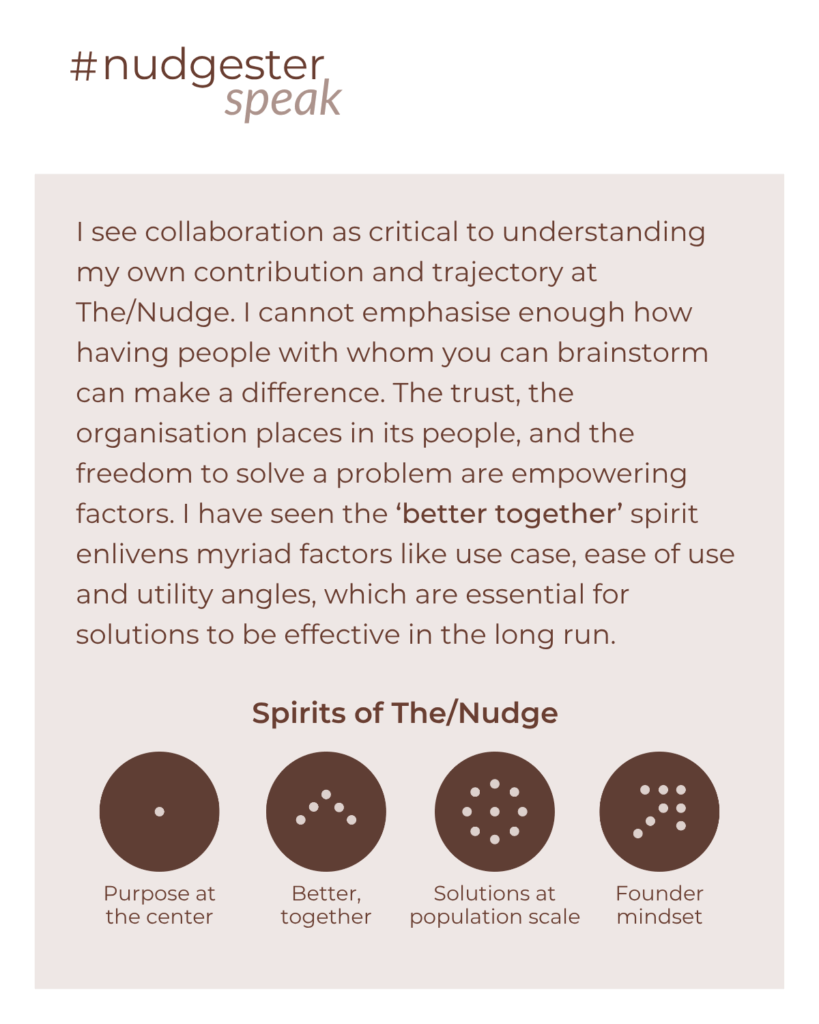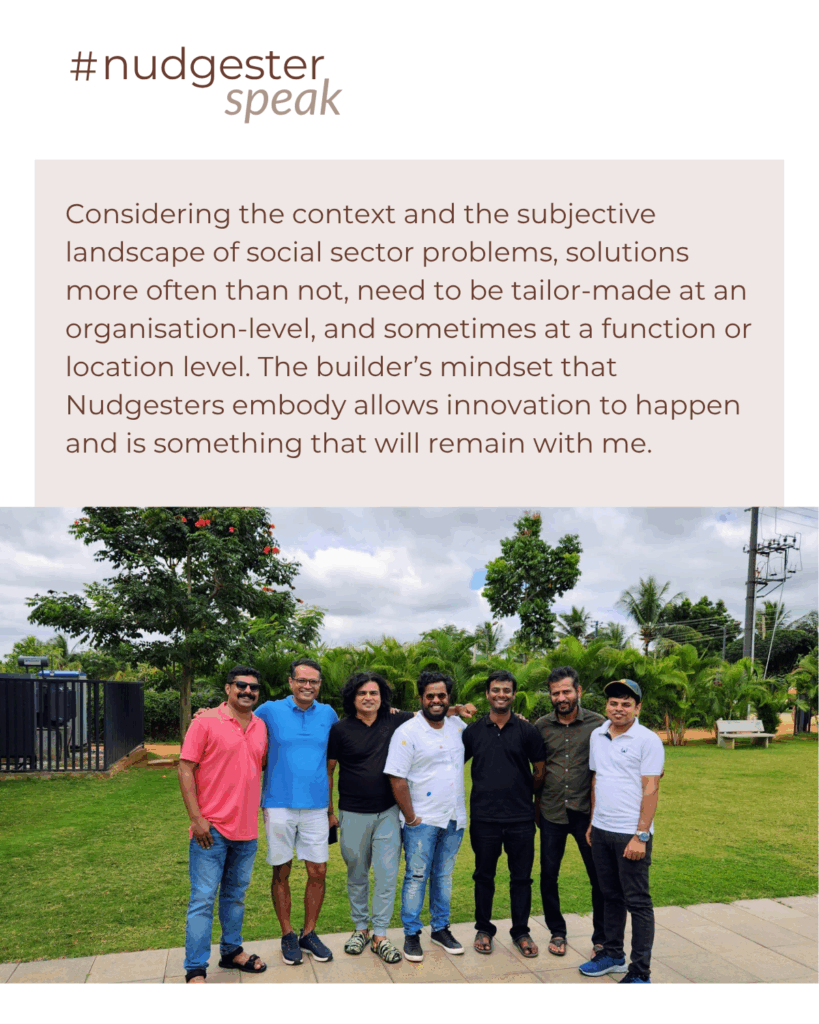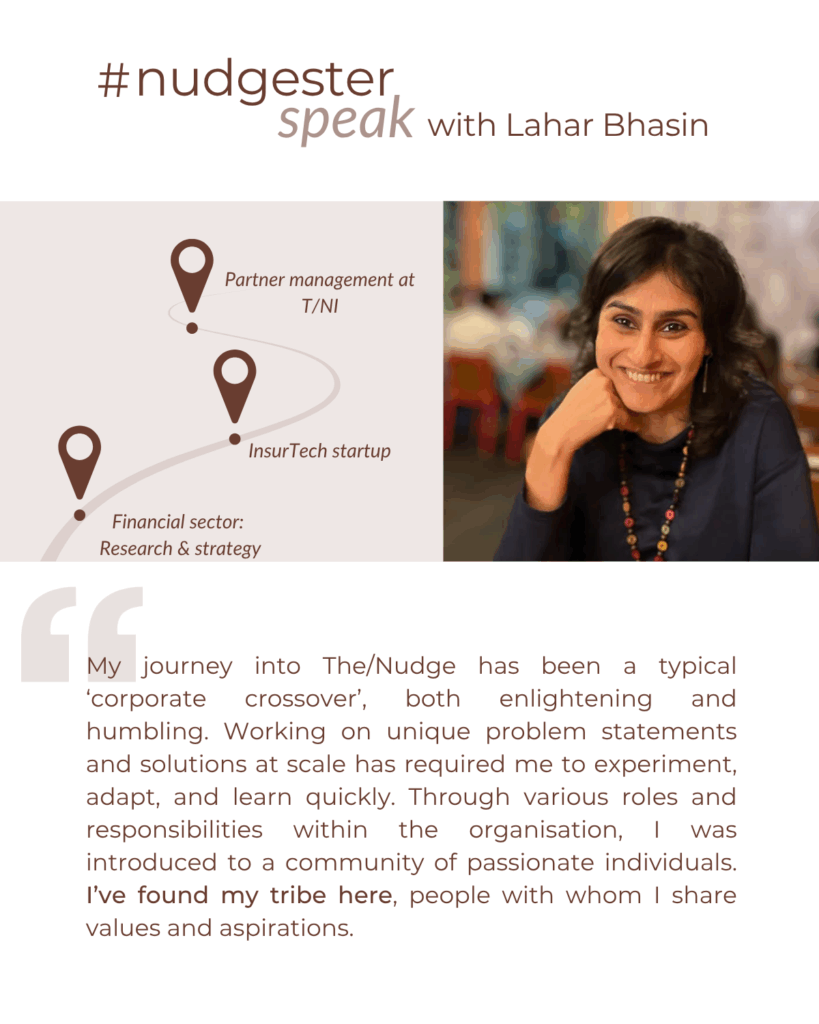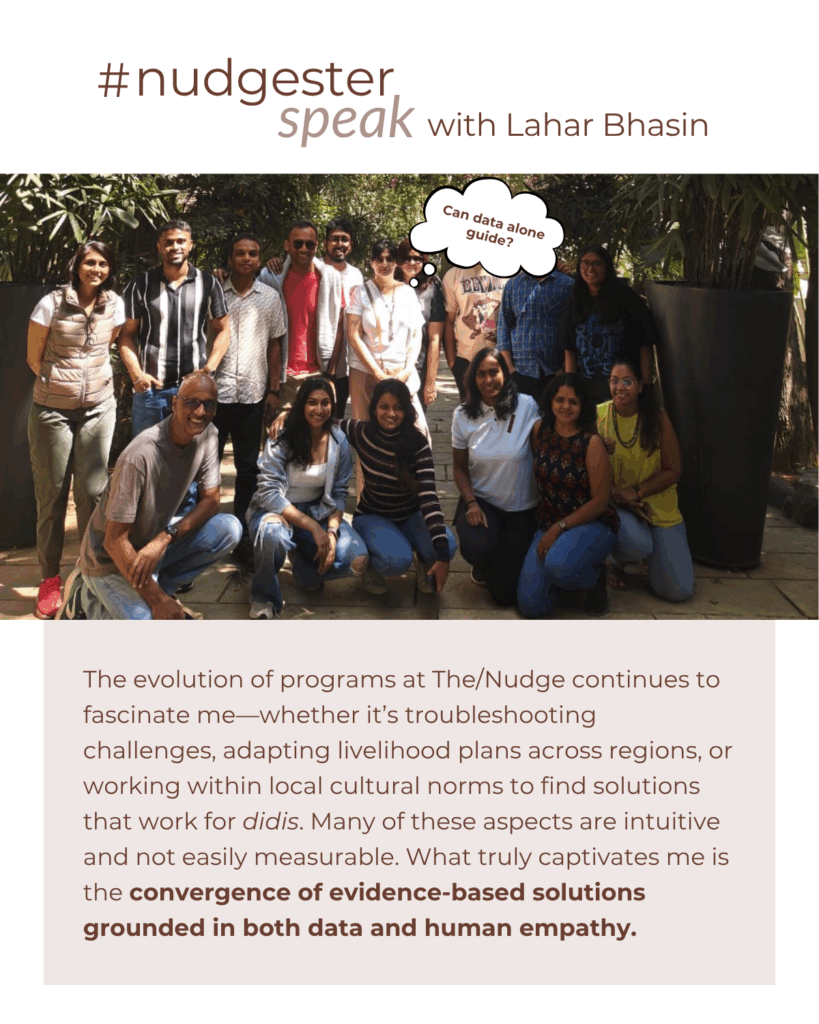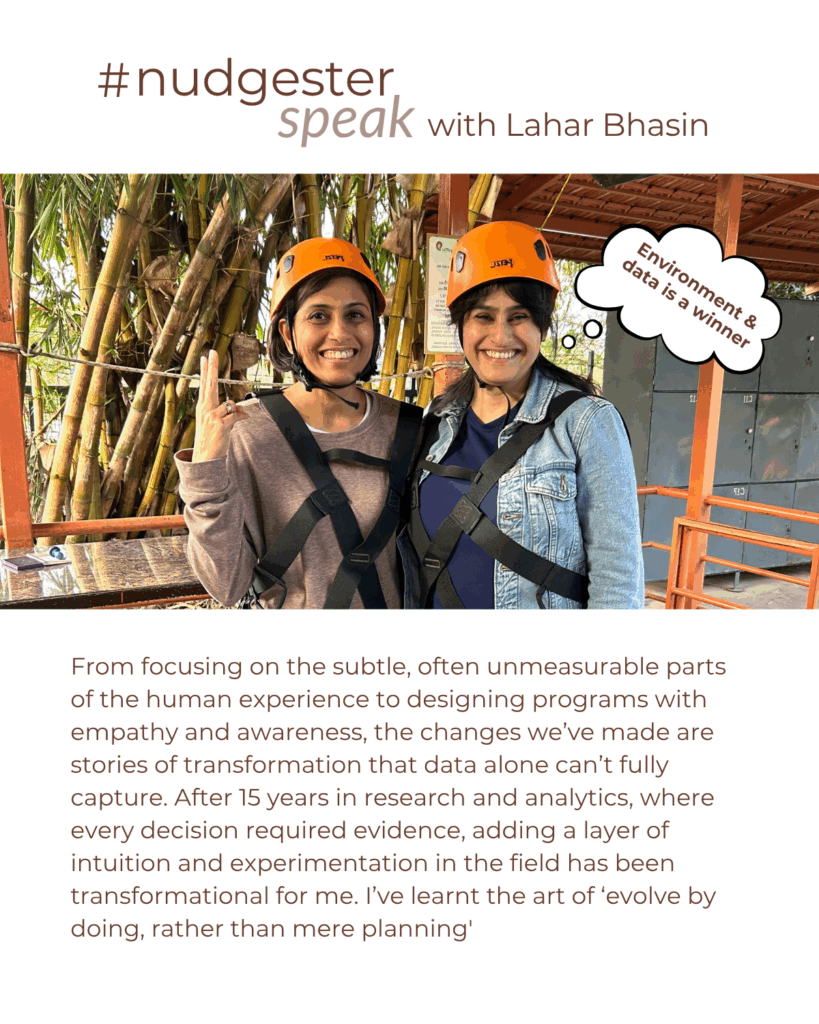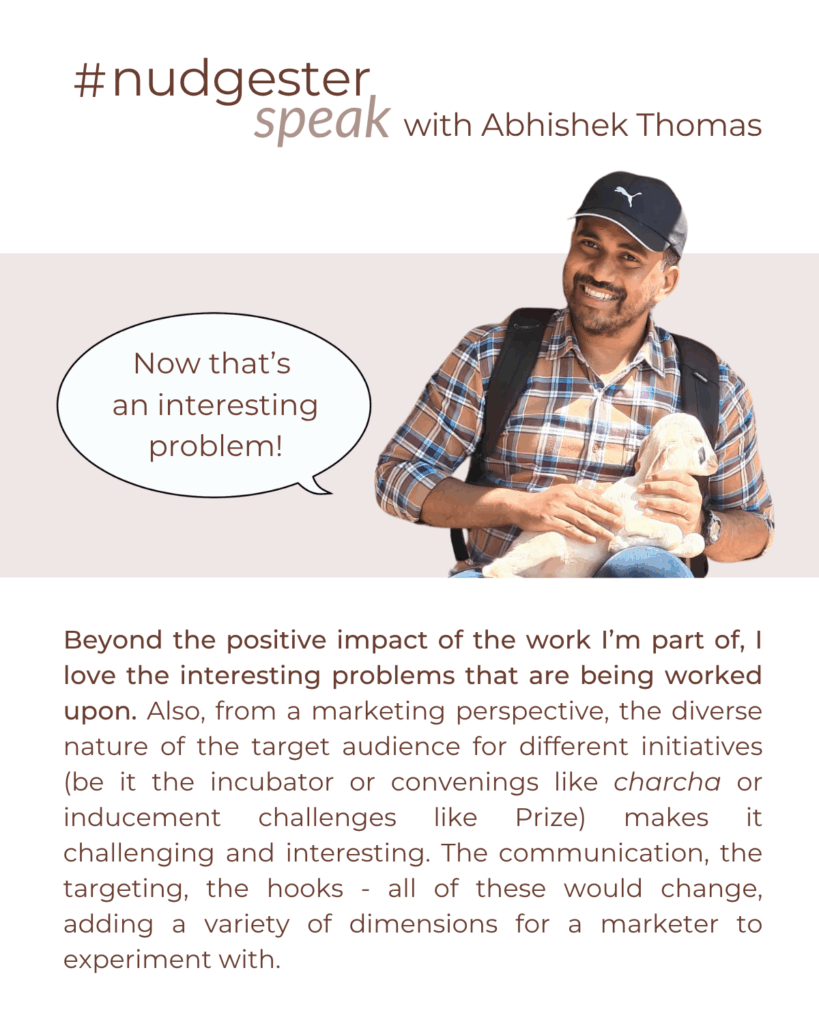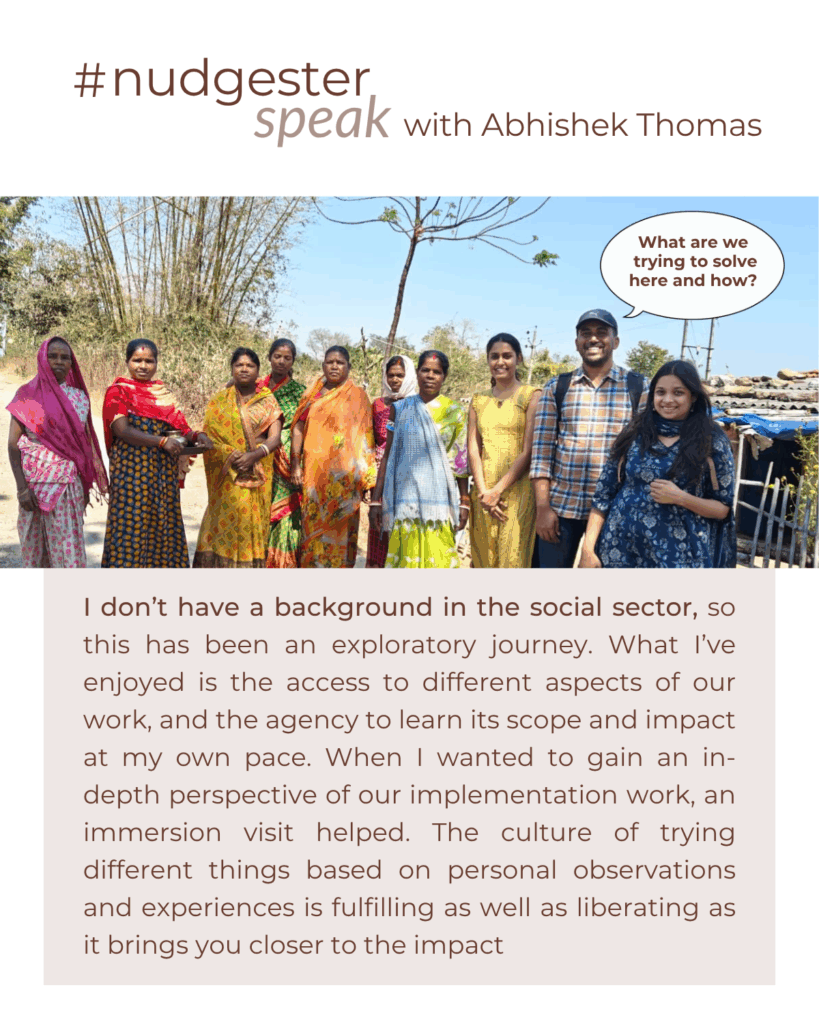“Didi aur kitna samay lagega?”
(Didi, how much more time will it take?)
“Bas didi aur 5 minute. Toh didi aap log ye bataiye ki…”
(“Just 5 more minutes. Didi please tell us…”)
After 30-35 minutes, I could feel the energy in the room slowly drain away. The group with whom we were conducting a focused group discussion looked uninterested and exhausted from recalling details and responding to questions. Only one or two voices broke the stillness while the rest sat quietly. Two group members had already slipped out, and the others seemed ready to follow suit. It was clear—the conversation was losing its spark.
The challenge: Traditional data collection struggles
We’ve all been there. Despite our best efforts to create an empathetic and engaging atmosphere, respondents in research group discussions often disengage, becoming restless and uninterested. As time drags on, the vibrant discussions we hoped for turn into one-sided exchanges where only a few outspoken participants dominate while others grow silent or leave.
Traditional methods like surveys or interviews, although tried and tested, often struggle to hold participants’ attention. Even with empathy and trust, researchers still face obstacles such as social desirability bias, immediate rapport building, power imbalances, and cultural barriers that inhibit authentic responses. These challenges call for more innovative, inclusive approaches to data collection.
A transformative approach: Games as a data collection tool
In recent years, games have emerged as a groundbreaking method for collecting data, offering a fresh alternative to conventional techniques. Unlike traditional surveys that directly solicit responses, games immerse participants in dynamic, interactive experiences. By doing so, they encourage openness, creativity, and authenticity.
What makes games effective?
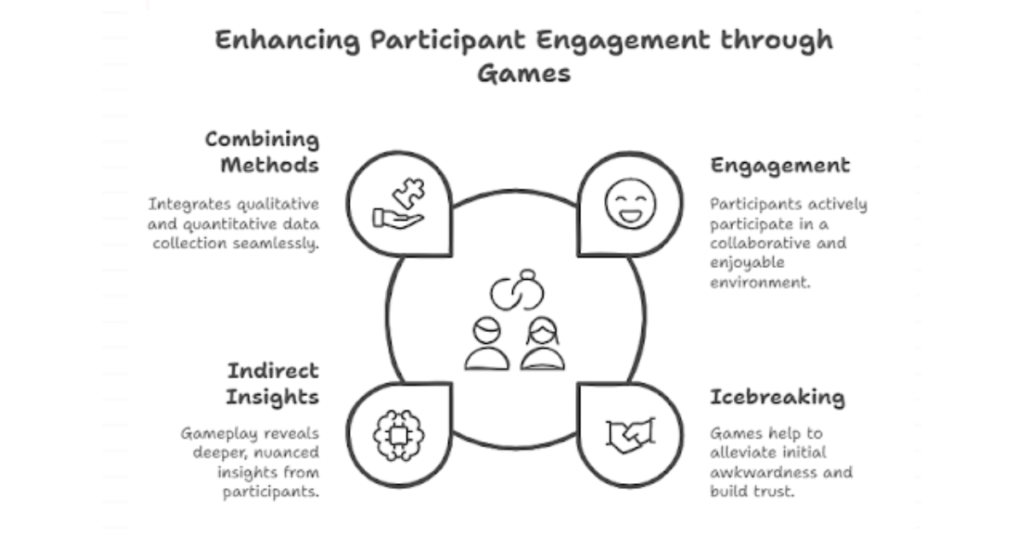
Research demonstrates the potential of games to simulate real-life systems, elicit complex behavioural data, and overcome power differentials between researchers and participants. (Costanza, 2014; Henriet, 2021) Their ability to foster meaningful social connections and generate authentic responses sets them apart as a versatile and inclusive tool in field-based research.
From theory to practice
Let’s look at an example from the field.
In Varanasi, Impact Hub conducted a “Well Being Study” of women workers from brick kilns who are from ultra poor families in Jharkhand. Initially, these women were hesitant, reserved, and unfamiliar with the researchers. Only one or two spoke briefly, while others avoided eye contact altogether.
To create a sense of ease, we began with a simple childhood fun game. We asked the women, “When was the last time you all played a game?” Most answered that they hadn’t played since before marriage or during their school years. As the group played, the atmosphere shifted dramatically. Laughter and giggles filled the air as the women began to relax and engage with one another. One participant remarked, “Didi bohot mazzaa aaya, bohot acha lga aap aae, bohot saalon se khel nahi khele the” (“Didi, it was so much fun; we are glad you came. We hadn’t played in years”).
| Building on this rapport, the team introduced a purpose-driven game called Hawa Chali. In the “Well Being Study,” Hawa Chali proved to be a game-changer. [ Adapted from children’s party games, it begins with the facilitator announcing, “The wind blows for those who…” followed by a statement like “…walk to school” or “…like toffees over chocolate.” Participants who relate to the statement must change position, introducing an element of movement and spontaneity. ] Through this simple mechanism, we gathered valuable insights. Statements were carefully crafted to align with study themes, such as work patterns (“How many of you enjoy working in the brick kiln?”) or health facilities (“How many of you gave birth to your child at the kiln?” and “How many of you are able to visit the hospital when facing health issues?” ). Observing movement patterns provided a visual map of group dynamics, while laughter and shared anecdotes deepened rapport. |
As the game progressed, even the most shy participants opened up. One woman, initially quiet, invited us to her temporary living quarters, where she candidly shared her personal experiences.
This success was later extended to another study where several games were incorporated into group discussions and individual interviews, but this time, it was only for immediate rapport-building, ice-breaking and blending. These activities proved invaluable for gathering rich, high-quality data while fostering trust and mutual understanding.
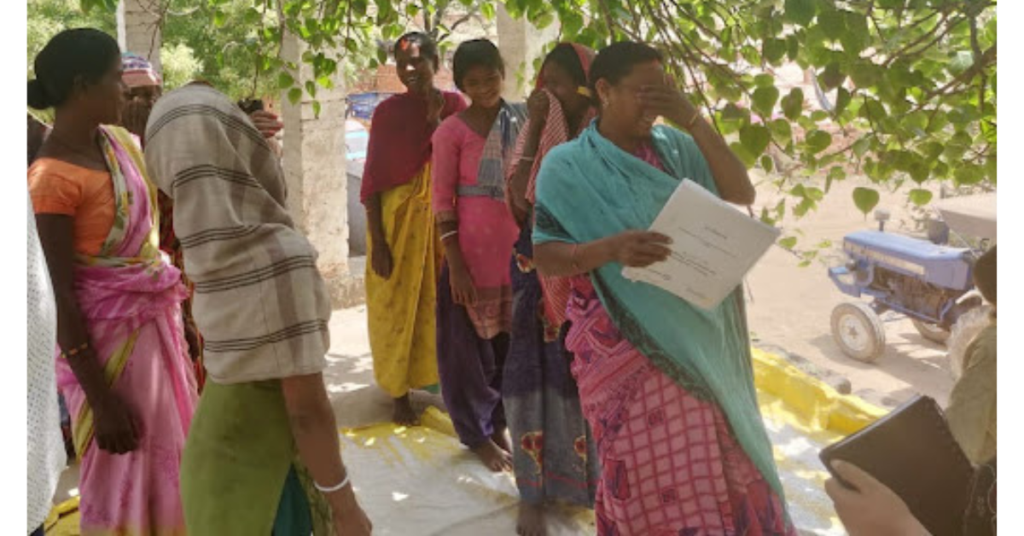
The success of Hawa Chali demonstrates the power of games in data collection. They create a relaxed environment, break cultural and linguistic barriers, and empower participants to share openly. By blending structured questionnaires with flexible interviews, games gather both qualitative and quantitative data. Their immersive nature also encourages deep reflection, yielding richer insights.
Why games work: Key benefits
- Breaking the ice: Games create a relaxed and comfortable environment, helping participants overcome initial hesitation. This leads to authentic interactions and more candid responses.
- Overcoming barriers: Visual elements, tokens, and structured game-play reduce the need for extensive translation, making games accessible across cultural and linguistic divides.
- Empowering participants: Games reverse traditional power dynamics by placing participants in control. This fosters engagement and encourages them to share freely without feeling intimidated.
- Blending methods: Games seamlessly combine the structure of questionnaires with the flexibility of interviews, enabling researchers to gather both qualitative and quantitative data.
- Encouraging reflection: The immersive nature of games helps participants think deeply about their experiences, resulting in richer, more meaningful insights.
Like anything in this world, using games as a tool for data collection comes with its own challenges. Elisabeth Henriet has explored these challenges in detail and provided recommendations for designing effective games for data collection.
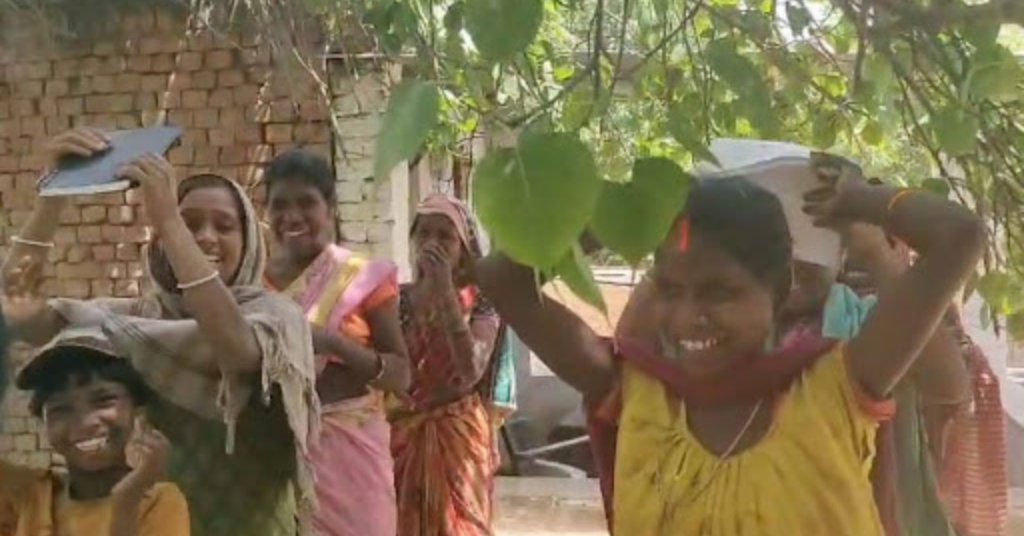
To gain a comprehensive understanding, it is essential to recognise these challenges as well.
Challenges of game-based data collection
Despite their promise, games also come with unique challenges:
- Balancing fun and structure: Ensuring that games remain enjoyable while collecting reliable data requires careful design.
- Translation and communication: Rules must be clearly explained to avoid misunderstandings, often requiring a skilled facilitator.
- Participant motivation: Not all participants may feel comfortable or interested in playing games, which can impact data quality.
- Logistics: Setting up materials, organising sessions, and managing time effectively can be resource-intensive.
- Data interpretation: The complexity of game-generated data, which often blends qualitative and quantitative elements, may pose analytical challenges.
Recommendations for effective game design
To address these challenges and maximise the benefits of games in data collection, researchers should consider the following:
- Tailored design: Customise games to match participants’ cultural context, education level, and physical ability. For example, use simple, familiar mechanics for groups with limited literacy.
- Thorough training: Equip facilitators and translators with the skills to manage sessions, explain rules, and foster a playful yet focused environment.
- Pilot testing: Test games with a small group before full implementation to refine mechanics, address logistical issues, and ensure relevance.
- Concise sessions: Keep games short and engaging to prevent fatigue and maintain participants’ enthusiasm.
- Simplified logistics: Use lightweight, portable materials to streamline the setup process, especially in remote or resource-constrained settings.
- Iterative refinement: Continuously improve games based on feedback and observations to enhance both participant experience and data quality.
Redefining data collection through play: Lesson learnt and road ahead
As seen with Hawa Chali, games transform the research experience into one of mutual joy, trust, and discovery. By fostering authentic connections and eliciting nuanced insights, games allow researchers to transcend the limitations of traditional methods.
Reflecting on the Varanasi study, the biggest takeaway is that methods matter. When we create spaces that are playful and inclusive, we don’t just collect better data—we honour the dignity and agency of participants. As one participant put it, “This was the first time someone asked about my life and made me smile at the same time.”
Moving forward, our goal is to integrate games more systematically into data collection efforts. This involves creating a repository of culturally adaptable games and training researchers to use them effectively. Ultimately, the hope is to transform data collection from a task to a shared experience—one that leaves participants feeling heard, valued, and with smiles, laughter, and the words, “Didi bohot mazzaa aaya, bohot acha lga aap aae!”
References
- Cloke P, Cook I, Crang P, Goodwin M, Painter J and Philo C (2004) Practising human geography. London: Sage Publications.
- Costanza R. (2014) Simulation games that integrate research, entertainment, and learning around ecosystem services. Ecosystem Service 10: 195-201.
- Henriet, E., Burnay, N., Dalimier, J., Hurley, J., & Henry, S. (2021) Challenges and opportunities of field-based data collection with a game: Analysis of the development and use of a game to collect data on people’s emotional experience in their environment. Department of Geography and Transitions Institute, University of Namur, Belgium.
- Schell J (2008) The Art of Game Design. Burlington: Morgan Kaufmann Publishers.

